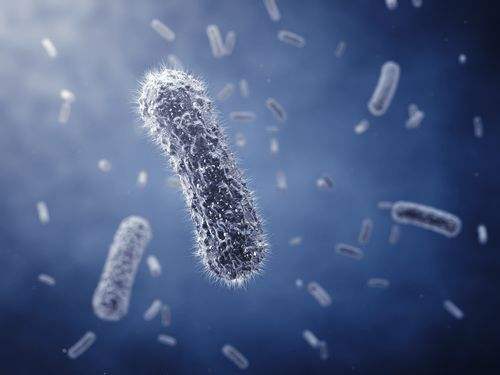(单词翻译:单击)
We now know that there are a lot of microbes living deep within the Earth, many of which have nothing at all to do with the organic world. They eat rocks or, rather, the stuff that's in rocks—iron, sulfur, manganese, and so on. And they breathe odd things too—iron, chromium, cobalt, even uranium. Such processes may be instrumental in concentrating gold, copper, and other precious metals, and possibly deposits of oil and natural gas. It has even been suggested that their tireless nibblings created the Earth's crust.
我们现在知道了,有大量微生物生活在地球内部的深处,其中许多与普通的有机世界毫无关系。它们吃的是岩石,说得更确切一点儿,岩石里的东西——铁呀,硫呀,锰呀等等。它们吸入的也是怪东西——铁呀,铬呀,钴呀,甚至铀呀。这样的过程也许对浓缩金、铜等贵重金属,很可能还对石油和天然气的贮存起了作用。甚至还有人认为,通过这样不知疲倦地慢咬细嚼,它们还创建了地壳。
Some scientists now think that there could be as much as 100 trillion tons of bacteria living beneath our feet in what are known as subsurface lithoautotrophic microbial ecosystems— SLiME for short. Thomas Gold of Cornell has estimated that if you took all the bacteria out of the Earth's interior and dumped it on the surface, it would cover the planet to a depth of five feet. If the estimates are correct, there could be more life under the Earth than on top of it.
现在有的科学家认为,生活在我们脚底下的细菌很可能多达100万亿吨,那个地方被称之为“地表下的岩石自养微生物生态系统”——英文缩写是SLiME。美国康奈尔大学的托马斯·戈尔德估计,要是你把地球内部的细菌统统取出来堆在地球表面,那么就可把把这颗行星埋在15米深处——相当于四层楼的高度。如果这个估计是正确的话,地球底下的生命有可能比地球表面的还要多。
At depth microbes shrink in size and become extremely sluggish. The liveliest of them may divide no more than once a century, some no more than perhaps once in five hundred years. As the Economist has put it: "The key to long life, it seems, is not to do too much." When things are really tough, bacteria are prepared to shut down all systems and wait for better times.
在地球深处,微生物个儿缩小,极其懒怠。最活泼的也许一个世纪分裂不到一次,有的也许500年分裂不到一次。正如《经济学家》杂志所说:“长寿的关键似乎在于无所事事。”当情况相当恶劣时,细菌们就关闭所有系统,等待好的年景。


